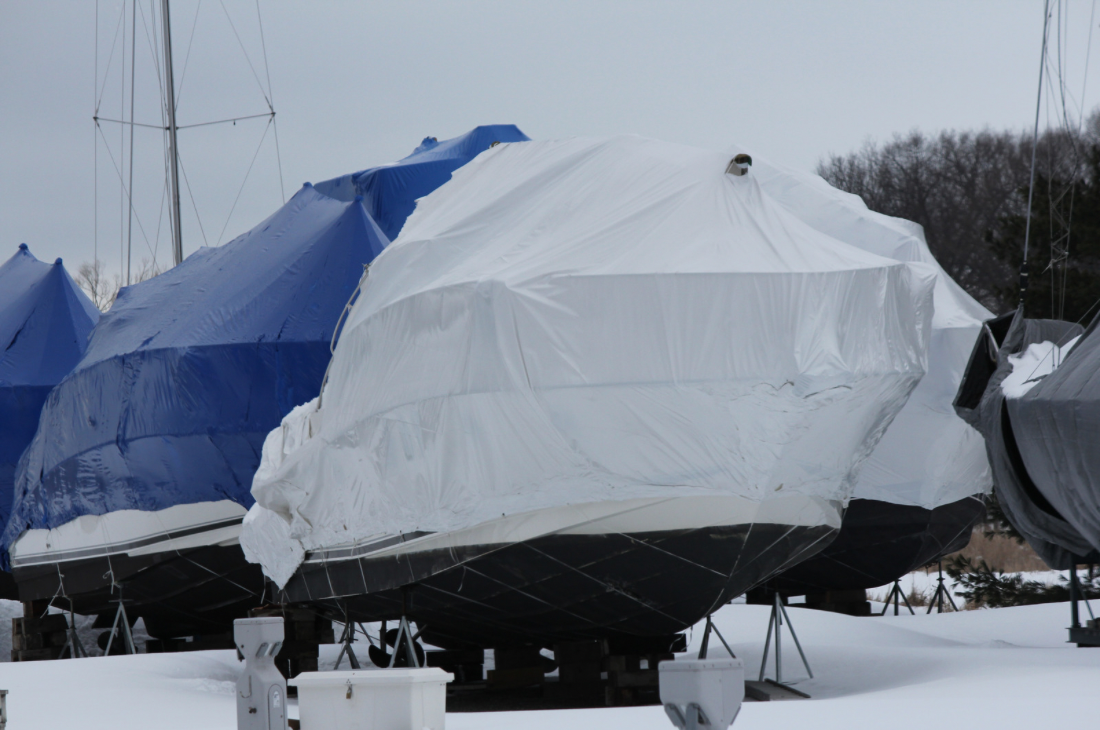
Your 2023 Boat Winterizing Checklist
As the winter season approaches, it's crucial for boat owners to undertake the necessary precautions to protect their vessels from the harsh elements. Proper winterization is essential to ensure that your boat remains in top condition during the colder months and is ready for action when spring arrives. Here's a comprehensive boat winterizing checklist to help you safeguard your investment and prevent any potential damage:
Engine Maintenance: Begin by thoroughly inspecting the engine. Change the oil and replace the oil filter to prevent any contaminants from causing damage during the dormant period. Consider adding a fuel stabilizer to prevent fuel degradation and potential engine issues. Flush the cooling system and ensure that all water is drained to prevent freezing and subsequent damage.
Exterior Care: Clean the exterior of your boat, including the hull, decks, and any exposed surfaces. Remove any algae, barnacles, or other growths that could lead to corrosion or other issues. Apply a protective wax or coating to safeguard the boat's finish from moisture, snow, and ice. Check and repair any cracks or damage to the hull to prevent water intrusion.
Electrical System Check: Inspect the boat's electrical system, including the battery and all wiring. Remove the battery and store it in a cool, dry place. Ensure that all electrical connections are secure and free from any signs of corrosion. Lubricate terminals and connectors to prevent rust formation. Disconnect all electrical devices and cover them to protect against moisture and dust.
Interior Cleaning: Thoroughly clean the interior of the boat, including the cabin, storage compartments, and upholstery. Remove all items that are susceptible to damage from freezing temperatures, such as electronics, fabrics, and liquids. Open all hatches and lockers to promote proper ventilation and prevent mold or mildew growth. Place moisture-absorbing products in strategic locations to maintain a dry environment.
Plumbing System Maintenance: Drain all water tanks, including the fresh water and waste systems, to prevent freezing and potential pipe damage. Flush the plumbing system with antifreeze to ensure that all water is removed. Check all hoses and connections for signs of wear and tear, and replace any damaged components. Add antifreeze to the bilge pump to protect it from freezing temperatures.
Propeller and Drive Unit Inspection: Carefully examine the propeller, drive unit, and rudder for any signs of damage or wear. Remove the propeller and inspect the shaft for any signs of corrosion or pitting. Apply a protective lubricant to prevent rust formation. Inspect the seals and gaskets of the drive unit for any leaks and replace them if necessary.
Covering and Storage: Invest in a high-quality, durable boat cover that provides full protection from the elements. Ensure that the cover is securely fastened and properly fitted to prevent any moisture from seeping in. If possible, store the boat in a dry, climate-controlled environment to minimize exposure to extreme temperatures. Consider using support structures to prevent the cover from sagging and accumulating water or snow.
Safety Equipment Check: Inspect all safety equipment on board, including life jackets, fire extinguishers, and distress signals. Replace any expired items and ensure that all equipment is in good working condition. Store safety gear in a dry, easily accessible location to facilitate quick access in case of emergencies.
Documentation and Inventory: Maintain a detailed checklist of all winterization procedures performed on the boat. Keep a comprehensive inventory of all equipment and supplies removed from the boat for the winter. Document any maintenance tasks that need to be addressed before the boat is ready for use in the spring.
Professional Inspection: Consider scheduling a professional inspection before winterizing your boat. A qualified marine technician can provide valuable insights and recommendations for any additional maintenance or repairs required. Their expertise can help you identify potential issues early and ensure that your boat remains in optimal condition throughout the winter months.
Key Takeaways
By following this comprehensive boat winterizing checklist, you can effectively protect your vessel from the damaging effects of winter weather. Proper maintenance and preparation will not only extend the life of your boat but also ensure that it's ready to hit the water as soon as the warmer days return. Protect your investment and enjoy peace of mind knowing that your boat is secure and well-prepared for the winter season.
